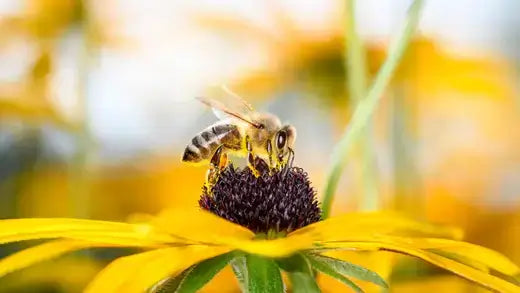A Garden's Ecological Treasure
To create vibrant and ecologically rich gardens, planting perennials for pollinators emerges as a vital practice with multifaceted benefits. Perennial plants that live for multiple years are crucial in sustaining the delicate balance of ecosystems, providing food, shelter, and breeding grounds for pollinators. Among the many remarkable species that deserve attention, milkweed, jewelweed, coneflowers, beebalm, and blazing star stand out as exceptional choices for promoting pollinator populations and enhancing the beauty and functionality of any garden.
Milkweed:
A Monarch's Lifeline Milkweed, often referred to as the "monarch's lifeline," plays an irreplaceable role in the survival of monarch butterflies. Monarchs rely exclusively on milkweed plants for laying eggs and as a food source. The relationship between milkweed and monarchs is a captivating example of coevolution, where the butterfly has developed the ability to sequester toxins from milkweed, making them unpalatable to predators. Planting milkweed in gardens directly contributes to the conservation of these iconic butterflies, which have been facing significant population declines due to habitat loss and pesticide use.
Jewelweed:
Nature's Poison Ivy Remedy Jewelweed, or touch-me-not, is a unique perennial with vibrant orange or yellow trumpet-shaped flowers. It has gained attention for its ecological value as a nectar source for hummingbirds and bees and its practical benefits. Jewelweed is considered a natural remedy for poison ivy rashes. The plant's sap contains compounds that can help alleviate the discomfort and itching caused by contact with poison ivy. By cultivating jewelweed in gardens, individuals can enjoy its aesthetic appeal and its potential to relieve the irritations of outdoor adventures.
Coneflowers:
Colorful Pollinator Magnets Coneflowers, members of the Echinacea genus, are beloved for their daisy-like flowers and prominent cone-shaped centers. These perennials come in various colors, from classic purple to vibrant reds, oranges, and yellows. Besides adding color to gardens, coneflowers are magnets for diverse pollinators, including bees, butterflies, and birds that feed on the seeds. Their durable nature and adaptability to different soil types make them popular for gardeners looking to create pollinator-friendly landscapes that remain visually appealing throughout the growing season.
Beebalm:
A Fragrant Haven for Pollinators Beebalm, also known as Monarda, is a fragrant perennial that boasts showy, tubular red, pink, and purple flowers. Its alluring aroma attracts pollinators like bees, butterflies, hummingbirds, and humans, who can enjoy the sweet scent while strolling through the garden. Beebalm's vibrant flowers and ability to thrive in moist conditions make it an excellent addition to rain gardens and areas prone to water accumulation. Furthermore, its medicinal properties have been recognized by indigenous cultures, which have traditionally used bee balm for various health purposes.
Blazing Star:
The Blazing star, or Liatris, is a captivating perennial that stands tall with its unique spike-like flower clusters. These vertical bursts of color can range from shades of purple to white, attracting a diverse range of pollinators, including bees, butterflies, and moths. The blazing star's distinctive form adds a touch of vertical elegance to garden landscapes, creating visual interest and dynamic height variations. Its late summer to early fall blooming period also provides essential nectar sources when many other flowers have faded, making it a valuable contributor to the overall pollinator diet.
The Ecological Balance and Beyond
While the benefits of planting perennials for pollinators are numerous, they extend beyond the immediate interactions between flowers and insects. By creating pollinator-friendly habitats, gardeners contribute to the overall ecological balance, promoting biodiversity and ensuring the reproduction of many plant species through pollination. Furthermore, these gardens serve as educational tools, offering opportunities for people to learn about the intricate relationships between plants and pollinators, thereby fostering a deeper appreciation for nature and its interconnectedness.
In conclusion, the act of planting perennials for pollinators transcends simple gardening; it is a profound ecological gesture that reverberates throughout ecosystems. Among the remarkable perennials that hold the potential to transform gardens into pollinator paradises, milkweed stands as a monarch's lifeline. Jewelweed offers relief from poison ivy. Coneflowers attract a kaleidoscope of pollinators, beebalm beckons with its fragrance, and blazing star adds vertical elegance. These plants beautify our surroundings and sustain the delicate web of life that depends on the synergistic dance of pollinators and plants. As we cultivate these perennial treasures, we sow the seeds of harmony, biodiversity, and wonderment in the very fabric of our natural world.

